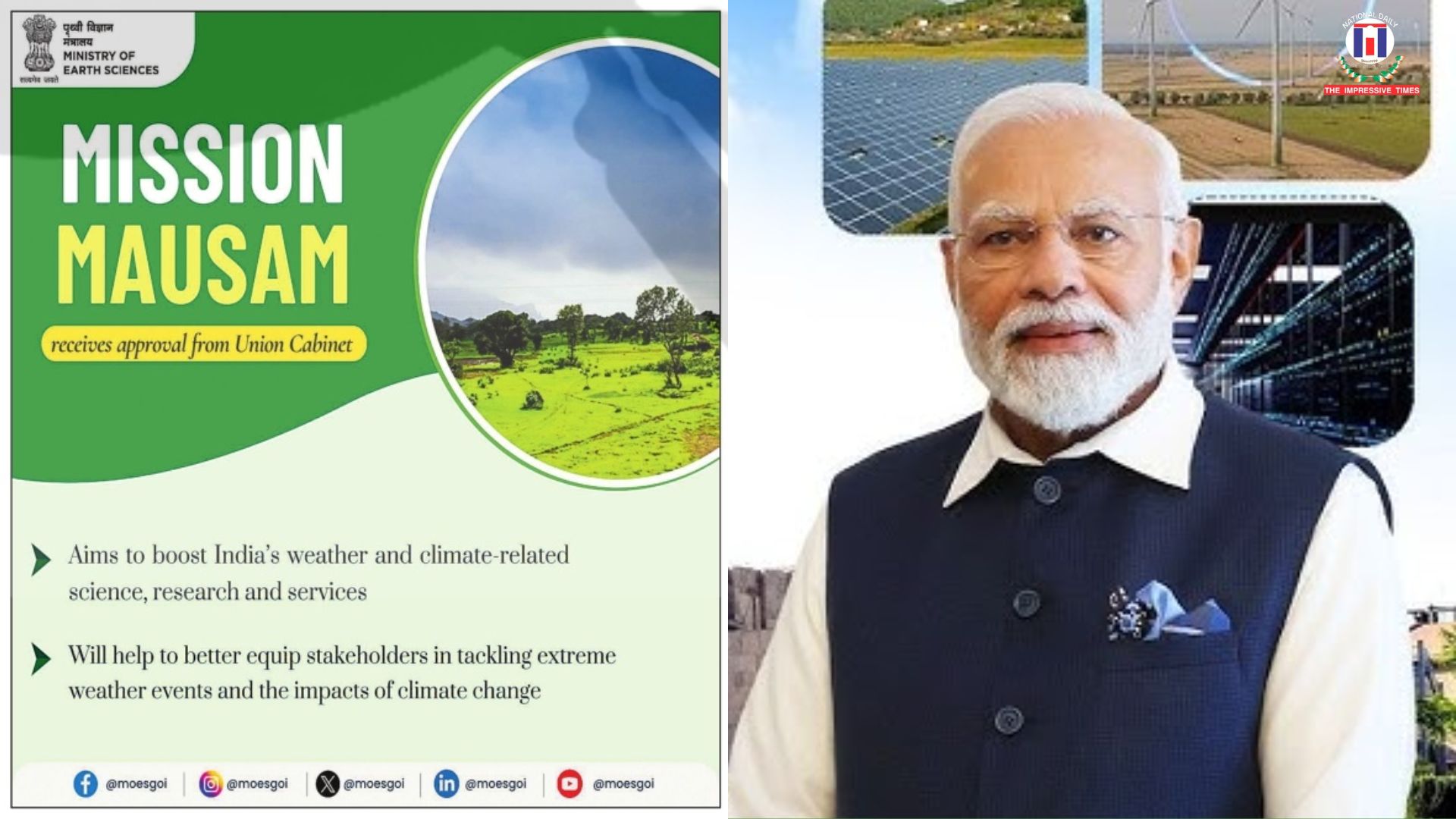
By Deepti
info@impressivetimes.com
In a landmark move aimed at reshaping India’s approach to climate change and disaster preparedness, the Union Cabinet on 11th September 2024 approved Mission Mausam, a futuristic weather initiative backed by a massive ₹2,000 crore investment. Designed to be executed over five years, the mission is India’s most ambitious effort yet to build a ‘Weather Ready’ and ‘Climate Smart’ nation.
The programme is structured into two distinct phases, each focusing on strengthening India’s weather forecasting capabilities through high-tech innovation, new infrastructure, and bold experimentation.
The first phase, active until March 2026, will significantly enhance the India Meteorological Department’s (IMD) observation network. Key among the upgrades are:
70 new Doppler weather radars, nearly doubling current capacity.
10 wind profilers and 10 radiometers — marking the first time India will use wind profilers for high-altitude wind tracking.
This expansion will help improve the resolution of Numerical Weather Prediction (NWP) models from 12 km to 6 km, allowing for precise, hyperlocal weather forecasts. These forecasts will be powered by advanced High-Performance Computing (HPC) systems, capable of processing vast real-time datasets for instant, accurate predictions.
The second phase will elevate India’s weather readiness to new heights. With the introduction of satellite-based monitoring systems and airborne sensors, the mission will gather continuous, real-time climate data.
One of the most revolutionary developments under this phase is the launch of India’s first cloud experiment laboratory at the Indian Institute of Tropical Meteorology (IITM), Pune. Slated for completion by March 2026, this lab will allow scientists to simulate cloud behaviour under varied conditions — enabling breakthroughs in cloud seeding and weather control.
Cloud chambers in this lab will be used to study how changes in temperature and humidity affect precipitation, paving the way for targeted weather interventions like inducing rain or suppressing hailstorms.
The practical outcomes of Mission Mausam could transform India’s economic and social landscape. The mission promises:
More accurate monsoon and drought predictions, critical for agriculture.
Faster response times to cyclones, floods, and heatwaves, enhancing disaster management.
Optimised flight safety and route planning for aviation industries.
Better urban air quality forecasts, improving public health in major cities.
According to estimates, these improvements could save billions in damage-related costs annually and significantly reduce economic losses caused by weather unpredictability.
Mission Mausam is also expected to create a boom in employment, especially in emerging tech and environmental sciences. High-demand fields include:
Meteorology & Climate Science: Greater need for climatologists, weather researchers and modellers.
Satellite Tech & Remote Sensing: Jobs in data interpretation, monitoring and analytics.
AI & Data Science: Specialists to work on AI-powered forecasting models.
Environmental Management: Professionals focused on climate resilience and disaster response.
Instrumentation & HPC: Engineers and system architects to manage sophisticated tools and computing systems.
Science Communication & Policy: Roles for public communication, education and policy advocacy.
In parallel with government-driven innovation, Mission Mausam unlocks exciting potential for entrepreneurs and private sector players:
Cloud Seeding Solutions: Demand for companies offering advanced rain enhancement technology is rising, especially in drought-prone zones.
AI-Powered Radars: Radar systems that offer real-time, predictive insights are in demand across agriculture, aviation, and defence.
Weather Balloons & Satellites: Startups can innovate by producing lightweight, affordable systems for atmospheric data collection.
Drones & IoT Integration: Weather-intervention drones and ground-based tech platforms are seeing a surge in interest, especially in flood-prone and heat-sensitive regions.
What makes Mission Mausam globally unique is its long-term goal of not just predicting weather — but controlling it. Cloud seeding, a process that uses particles like silver iodide to stimulate rainfall, is being actively explored. The IITM laboratory in Pune will conduct controlled simulations, hoping to refine cloud manipulation techniques by 2031. Future applications could include:
Artificial rain to combat droughts
Hailstorm suppression to protect crops
Fog reduction to improve transportation safety
Tenders will soon be floated to invite both public and private labs to develop the necessary cloud-modification equipment.
Globally, cloud seeding has gained momentum, with China, Russia, and the UAE leading large-scale initiatives. In 2022, China reportedly induced over 8.5 billion tonnes of rainfall via cloud seeding in the Yangtze basin. The UAE has long relied on it for addressing water scarcity, while Russia has used it to mitigate heatwaves.
Despite success stories, cloud seeding remains a scientifically complex and ethically sensitive domain. Environmental concerns — such as chemical residues from seeding agents — require strict oversight and long-term research.
According to recent market data:
The global cloud seeding market was valued at $375.6 million in 2023.
It is expected to hit $684.2 million by 2032, growing at a CAGR of 6.7%.
Asia-Pacific held a whopping 77.93% market share in 2023, with China at the forefront.
Regions like North America, Europe, and the Middle East & Africa are fast expanding their cloud seeding infrastructure.
Mission Mausam places India at the cutting edge of climate technology. As weather unpredictability grows more intense with climate change, this initiative could redefine how a nation prepares for, reacts to, and even engineers its environment.
However, experts caution that while controlled weather modification offers hope, it must be approached with scientific precision, ethical responsibility, and policy foresight. Ultimately, Mission Mausam is not just a weather programme — it’s a national commitment to safeguarding India’s future against the storms ahead.














No Comments: